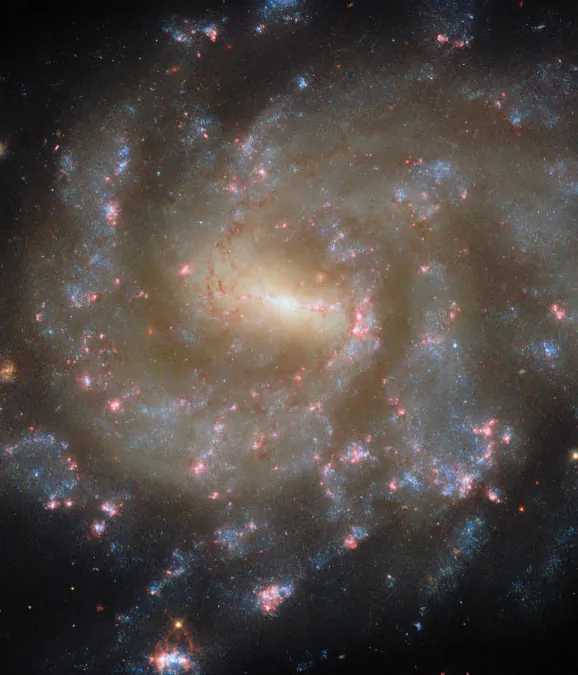
Discover the Stunning Star-Forming Galaxy NGC 685 Captured by Hubble!
2025-06-02
Author: Siti
A Glimpse Into the Heart of NGC 685
Behold the breathtaking beauty of NGC 685, a sprawling spiral galaxy teeming with vibrant star-forming nebulae that light up like glowing pink clouds in stunning new images captured by the NASA/ESA Hubble Space Telescope.
Location and Discovery
Located roughly 64 million light-years away in the southern constellation of Eridanus, NGC 685—also known by names like ESO 152-24 or IRAS 01458-5300—was first discovered by the renowned British astronomer John Herschel back on October 3, 1834.
Size and Structure of NGC 685
This magnificent galaxy spans about 74,000 light-years across and showcases a bright central bar with curving, patchy arms that spiral outward. Hubble astronomers classify NGC 685 as a barred spiral galaxy, akin to our very own Milky Way, though it is notably less than half its size.
A Hotbed of Star Formation
Hubble’s keen observations of NGC 685 are part of two focused programs aimed at understanding star formation. Unsurprisingly, the galaxy was chosen for study due to its striking features: many bright blue star clusters illuminate the spiral arms, all nestled within wispy pink gas clouds known as H II regions. These clouds give off a brilliant glow as massive, hot stars are born.
Captivating H II Regions
One particularly captivating H II region is even visible at the bottom edge of the recent image, showing the dynamic and chaotic processes involved in star birth. Despite the numerous star-forming regions depicted in Hubble's snapshot, NGC 685 only converts less than half the mass of our Sun into new stars annually.
Unlocking the Secrets of Stellar Nurseries
The data collected by Hubble during these observing programs will be instrumental in cataloging approximately 50,000 H II regions and 100,000 star clusters across nearby galaxies. By merging Hubble's sensitive visible and ultraviolet observations with infrared data from the James Webb Space Telescope, alongside radio data from the Atacama Large Millimeter/submillimeter Array, astronomers aim to peer deeper into the dusty depths of these stellar nurseries, shedding light on the formation of stars yet to be born.


 Brasil (PT)
Brasil (PT)
 Canada (EN)
Canada (EN)
 Chile (ES)
Chile (ES)
 Česko (CS)
Česko (CS)
 대한민국 (KO)
대한민국 (KO)
 España (ES)
España (ES)
 France (FR)
France (FR)
 Hong Kong (EN)
Hong Kong (EN)
 Italia (IT)
Italia (IT)
 日本 (JA)
日本 (JA)
 Magyarország (HU)
Magyarország (HU)
 Norge (NO)
Norge (NO)
 Polska (PL)
Polska (PL)
 Schweiz (DE)
Schweiz (DE)
 Singapore (EN)
Singapore (EN)
 Sverige (SV)
Sverige (SV)
 Suomi (FI)
Suomi (FI)
 Türkiye (TR)
Türkiye (TR)
 الإمارات العربية المتحدة (AR)
الإمارات العربية المتحدة (AR)